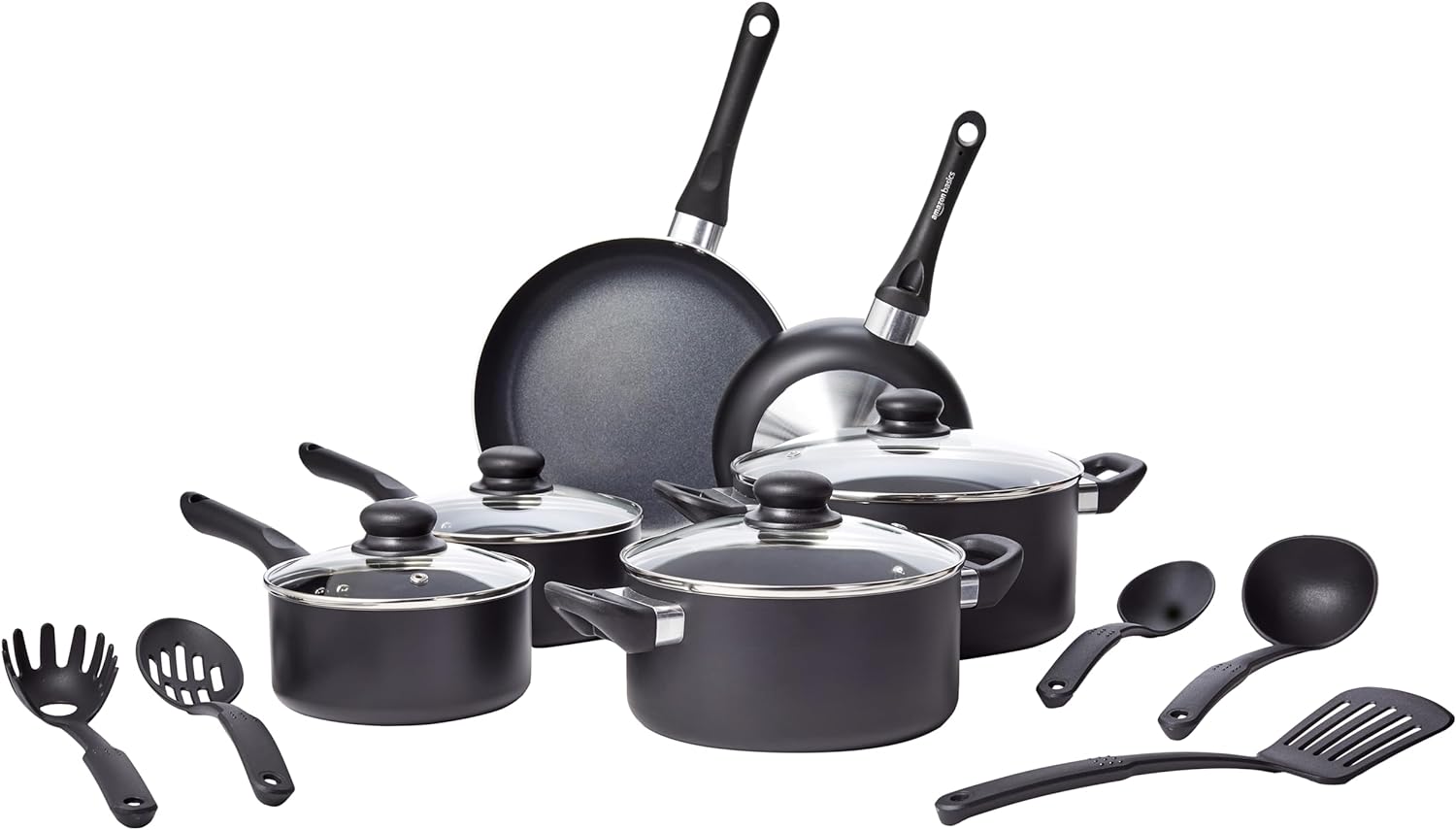Cookware Sets: The Ultimate Buyer's Guide
Whether you're a seasoned chef or just starting your culinary journey, the right cookware can make all the difference in your kitchen. In this guide, we'll help you navigate through the many options available so you can understand more about the materials, features, and considerations that are essential for selecting the perfect cookware set.
How To Choose a Cookware Set
Decide how many pieces you require
The first thing you should keep in mind is the required number of pieces. A cookware set typically comes with pieces like stockpots, saute pans, frying pans, saucepans, utensils, and stock pans. You can pick something with fewer (or more) pieces, according to your personal preference. A set with more pieces might not be suitable for smaller families as you might use one or two, leaving the rest to sit in the cabinet purposelessly. If you like to cook and try different dishes, consider buying a cookware set which at least covers the necessary items. Professional setups might want to pick one that has multiple pieces.
Handling
You may need to transfer your cookware from one place to the other. Check the weight of your cookware and style of handle to see whether it's easy to carry from one place to the other. Apart from the grip, the attachments should be sturdy and tight. If you plan to use cookware in the oven, go for something with wooden or metallic handles rather than plastic ones.
Lids
Cookware lids are essential to promote even cooking. Most picks come with glass lids that release an adequate amount of steam. They also allow you to see what's happening within the pots.
Induction compatibility
Most nonstick cookware won't work with induction cooktops, while stainless steel is suitable for all kinds of burners. Check whether your pick is ideal for the type of burner you currently have at home.
Size
The size of your pots and pans also plays a critical role in determining the quantity of food you can cook. If you prepare large batches of food, it's always better to go with a bigger capacity or multiple items.
Material Types
Stainless steel
Stainless steel cookware is renowned for its durability and resistance to rust, corrosion, and staining. It's a versatile option suitable for various cooking techniques, from searing to simmering. When combined with aluminum or copper layers, stainless steel exhibits good heat conductivity. While it's easy to clean and dishwasher safe, it may require preheating or seasoning to prevent food from sticking.
Nonstick coated
Nonstick cookware features a coating such as Teflon or ceramic, making it perfect for cooking delicate foods like eggs and pancakes without sticking. It requires less oil or butter, promoting healthier cooking. Cleaning is a breeze as food residue slides off effortlessly. But, it's not suitable for high-heat cooking or metal utensils, and the coating may wear off over time.
Cast iron
Cast iron cookware boasts excellent heat retention and distribution, ideal for searing and frying. When properly seasoned, it becomes naturally nonstick. Its durability means it can last for generations, but it requires seasoning and proper care to prevent rusting. And it's heavy and may take longer to heat than other materials.
Aluminum
Aluminum cookware is lightweight and budget-friendly with excellent heat conductivity for even cooking. Unfortunately, it can react with acidic foods, leading to discoloration or a metallic taste. Anodized aluminum options are available to prevent reactions with acidic foods and increase durability. It's not dishwasher safe unless specified by the manufacturer and can be prone to scratching and denting.
Copper
Copper cookware offers superior heat conductivity, precise temperature control, and even heating, reducing hot spots. Its responsiveness to temperature changes makes it a favorite among chefs. But, it's expensive and requires regular polishing to maintain its appearance. Typically, copper cookware is lined with stainless steel to prevent copper from leaching into food.
Carbon steel
Carbon steel cookware, like cast iron, heats quickly and evenly, making it suitable for high-heat cooking methods. It's naturally nonstick when properly seasoned and is lightweight yet durable. Similar to cast iron, it requires seasoning and proper care to prevent rusting. Handwashing and immediate drying are also necessary, as it's not dishwasher-safe.
Ceramic
Ceramic cookware is known for its non-reactive nature, making it a safe choice for cooking acidic dishes. It's free from harmful chemicals like PFOA and PTFE often found in traditional nonstick coatings. Ceramic coatings offer excellent nonstick properties, making them suitable for low-fat cooking and easy cleanup. Of course, they often require gentle handwashing to preserve the coating's integrity. While ceramic cookware is generally durable, it can chip or scratch over time, particularly if you use metal utensils.





